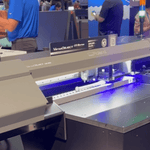
Clap Back with Class: My Step-by-Step Playbook for Replying to Reviews
Because every “1-star—wouldn’t recommend” is really a spotlight (if you know how to work it).
Ever had a one-star zinger pop up on your shop and felt that slow-motion “noooo” ripple through your spine? Same. But here’s the plot twist: that fiery little review is actually front-row PR seating—if you handle it right. In today’s “Clap Back with Class” playbook, I’m pulling back the curtain on exactly how I respond when someone drags my beloved acrylic (or my life choices) through the digital mud. We’ll walk through a three-step framework that swaps knee-jerk defensiveness for empathy, facts, and future-customer magnetism—without ever admitting fault we don’t own or scolding a buyer with you language. Grab your coffee, tuck in, and let’s turn that public complaint into a standing ovation for your brand.
Step 1 – Lead with Empathy — Zero Blame Attached
Objective: Acknowledge their experience and defuse emotion without owning fault or liability.
How:
-
Open with gratitude + recognition of their feelings (not your culpability).
“Thanks for taking the time to share your experience— I understand it’s frustrating when a product doesn’t work out as planned.” -
Use neutral phrasing that centers on the outcome, not on who’s at fault.
Avoid: “We’re sorry we messed up…”
Use: “I’m sorry to hear the result wasn’t what you expected…” -
Keep it concise—one sentence of empathy, then move on to the facts in Step 2.
Why it works: You validate the customer’s feelings (future readers see you care) while leaving space to clarify details in the next section—without handing over the blame baton.
Step 2 – Reframe & Educate (a.k.a. the Friendly Facts Check—No Tech Specs Needed)
Objective: Spotlight the product’s strengths and calmly present the record, minus any finger-pointing or laser-setting deep dives.
How:
-
Restate the purpose or highlight the hero features.
“Our Mystery Box is designed for makers who love testing fresh, limited-run shades—each batch pulls from our most popular collections.” -
Present neutral facts (ditch the word “you”).
-
“The order shows a Mystery Box containing five of last quarter’s top-selling colors…”
-
“The listing notes that colors vary, allowing creators to experiment without over-stocking any single hue…”
-
-
Bridge to possibility and social proof.
“Many customers use these surprise shades to prototype new product lines or add seasonal pops without committing to full sheets.”
Why it works: Future shoppers see that (a) the product is legit, (b) the details were clear, and (c) plenty of other creatives are crushing it with the same goods—no laser-settings lecture required.
Step 3 – Pivot to the Audience of Tomorrow
Objective: Show every passer-by that working with you is painless—even when things go sideways.
How:
-
Invite resolution off-stage.
“If you’d like to troubleshoot settings or arrange a swap, our support team is at hello@cmbacrylic.com.” -
Signal continuous improvement.
“Feedback like this helps us level-up our tutorial library—thank you for the assist.” -
Finish on a high-service note.
“We’re here to make your next project sparkle (literally).”
Why it works: Future shoppers see professionalism, options, and zero drama.
Quick Reference Cheatsheet
Don’t Say: “You misunderstood the listing.” Do Say: “The listing notes X, but I realize that can be missed—thanks for flagging it.”
Don’t Say:“You ordered incorrectly.” Do Say: “The order reflects size A; if you need size B, we can exchange it…”
Don’t Say:“You need to…”. Do Say: “Happy to walk through alternate settings that many customers use…”

Prev post
Why Is Acrylic So Expensive? Let’s Talk Pricing, Growth, and Quality in Your Laser Business
Updated on 08 June 2025
Next post

Level Up Your Laser & UV Printing Business at UV Energize 2025!
Updated on 06 May 2025
